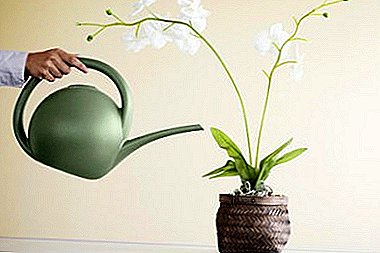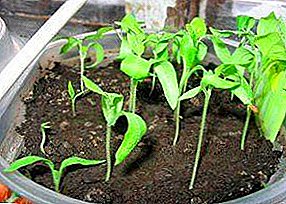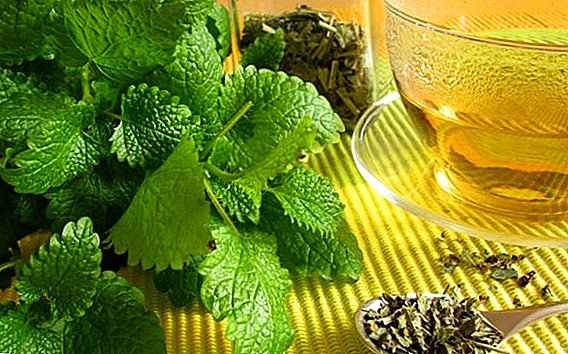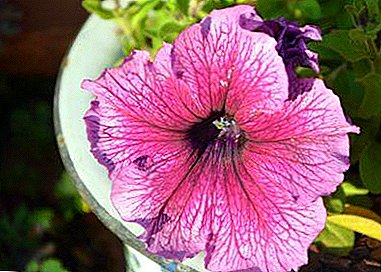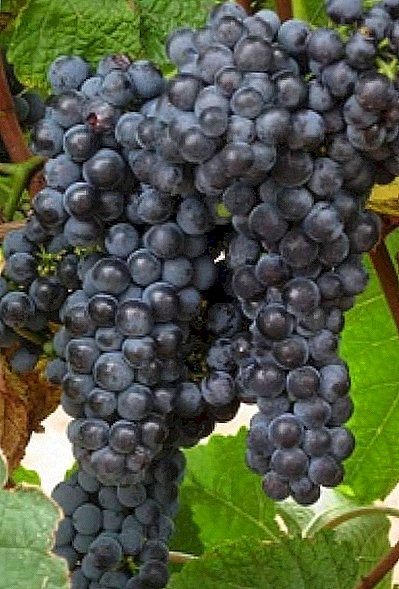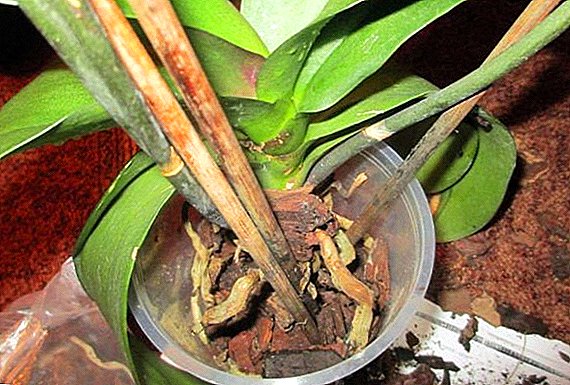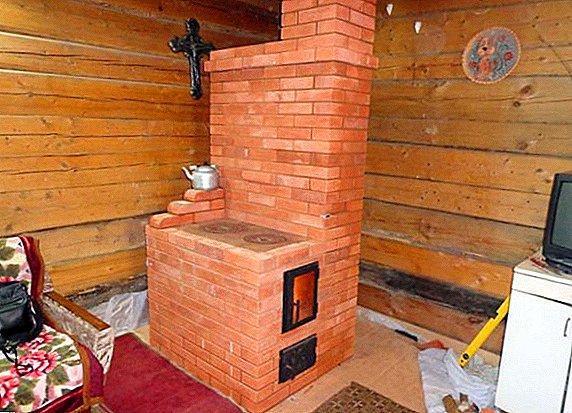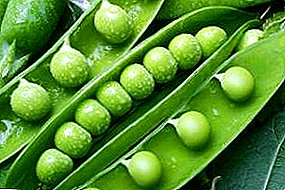
Peas - annual plant, related to legumes. When fresh, this is a very tasty delicacy, sweet to the taste, loved by both children and adults. It will be delicious only until such time as the sugar peas in the pod have been choked.
In dried form, peas are used to make soups and porridges, which are quite nutritious. Green canned peas - one of those vegetables, which is necessarily present on any holiday table in salads and in other dishes.
Useful properties of peas
Peas are ahead of all other vegetables in their protein content. Also in its composition there are starch, sugar, fat, amino acids, vitamins A, C, B1, B2, mineral substances - phosphorus, potassium, magnesium.
Dishes from peas are recommended for anemia, constipation. A decoction of grass and pea seeds is used as a diuretic for kidney stones. Pea flour is used to soften the boil. Pea helps to improve brain function, reduce blood sugar in diabetes, improve metabolism.
The rules of growing strawberries on the Dutch technology.
Useful information here on the topic: Diseases and pests of red currant.
Find out the best varieties of black currant //rusfermer.net/sad/yagodnyj-sad/posadka-yagod/luchshie-sorta-chyornoj-smorodiny.html.
Pea - feed crop
The great importance of peas lies in the fact that it is used as a fodder crop for livestock. Crushed and steamed pea chaff, given to cattle. To improve the weight gain of animals, as well as to improve the quality of meat, animals are given concentrated feed from pea flour.
Pea - fertilizer for soil
Peas are able to enrich the soil with nitrogen compounds. The culture tubers formed on the roots of a plant contain microorganisms that assimilate the nitrogen necessary for the plant from the air.
At the same time from them receives mineral salts and water. Due to this valuable property, peas grow easily on depleted soils. And after its withering away, the plant leaves the soil enriched with nitrogen.
Pea Varieties
Sugar - in turn, they distinguish dessert and scapular varieties.
 Dessert Pea varieties are distinguished by sweet and delicate beans, which can be used both fresh and boiled. Blade varieties are used to make soups and side dishes.
Dessert Pea varieties are distinguished by sweet and delicate beans, which can be used both fresh and boiled. Blade varieties are used to make soups and side dishes.
Shelling The beans of this variety have a thick parchment layer on the inside. Eat mainly the seeds of shelling varieties of peas. Beans with green and not whitened color can be used fresh. Shelling peas are dried and used to make soups and porridges.
Cultivation and care of peas
Before proceeding to the cultivation of peas, it is necessary to determine the choice of the cultivar variety, to allocate for it a plot of land that is well illuminated by the sun.
Dates of sowing peas
Peas are planted at the earliest dates, when the soil is most saturated with moisture after winter. This is due to the fact that the plant - moisture-loving. Late on April 22-25, planting peas is not recommended. The culture is resistant to low temperatures; pea seeds can also germinate at air temperatures of + 1 ... + 2 degrees; young shoots withstand freezing to minus eight degrees.
Varieties of varieties of currant red.
Learn how to grow basil in your garden //rusfermer.net/ogorod/listovye-ovoshhi/vyrashhivanie-i-uhod/vyrashhivanie-bazilika-iz-semyan-metody-polucheniya-kachestvennogo-urozhaya.html.
Pea seed preparation
First, the seeds of peas must be heated, then they must be sifted and separated from diseased and nonstandard seeds of culture. For 5 minutes, lower the seeds into a hot solution of micronutrients containing ammonium molybdate and boric acid (2 g of fertilizer per 10 liters of water). This treatment helps to reduce seed damage by the nodule larva larva.
Planting peas
 Both dry and swollen pea seeds are planted. To sprout the peas faster, it is soaked overnight. Seeds overexposed in water can spoil and cannot be planted in the soil. It is good to plant seeds before planting with nitragin and rhizotorphine at the rate of 0.5-1.6 grams of fertilizer per 1 kg of seeds.
Both dry and swollen pea seeds are planted. To sprout the peas faster, it is soaked overnight. Seeds overexposed in water can spoil and cannot be planted in the soil. It is good to plant seeds before planting with nitragin and rhizotorphine at the rate of 0.5-1.6 grams of fertilizer per 1 kg of seeds.
Early sowing of peas is covered with foil, as in cold soil, seed damage by soil pests is possible. Planted crops can be monthly seedlings. The second decade of May is a great time for planting seedlings at a permanent place. Transplant plants tolerated relatively well.
Sowing peas in furrow
A furrow along the width of 16-25 cm is made along the beds. The distance between the furrows is 50-70 cm. The furrow is filled with compost or humus, ash and complex fertilizer are added, soil is laid on top and well leveled. The depth of the furrow after all this should be no more than 3-5 cm. It’s best to do this in advance.
 At a distance of 5-8 cm from each other, peas are scattered throughout the furrow area. After - sprinkled with earth from the sides in such a way that the peas remain at a depth of no more than 5 cm. With the back of the rake, the earth is well compacted. This is necessary so that the moisture normally comes to the seeds of the plant.
At a distance of 5-8 cm from each other, peas are scattered throughout the furrow area. After - sprinkled with earth from the sides in such a way that the peas remain at a depth of no more than 5 cm. With the back of the rake, the earth is well compacted. This is necessary so that the moisture normally comes to the seeds of the plant.
Small sides at the edges of the grooves are best left. In the center of the groove at a distance of 1-1.5 m pegs are inserted, on which a high metal mesh with large cells is fixed. It serves as a support for the plant. On the 7-10th day after planting shoots appear.
Three-line ribbons can be planted: the distance between the lines should be 10-15 cm, and between the extreme rows - 6-10 cm, the depth of the lines - 3-5 cm.
Recommend reading: How to grow cauliflower.
Do not forget to learn how to grow Peking cabbage //rusfermer.net/ogorod/listovye-ovoshhi/vyrashhivanie-i-uhod/vyrashivanie-pekinskuyu-kapustu-na-svoem-uchastke.html.
Pea care
Peas must be protected from birds. To do this, seedlings covered with a grid or pull the thread. In the initial period of growth, the soil should be loosened and spud around the plant. Thus, there is a protection against the pea weevil, eating the edges of the leaves. Water the plant in dry weather, fed once every one or two weeks. The first feeding is carried out to achieve a plant height of about 8 cm.
During the flowering and pouring beans, watering and fertilizing are especially needed. Irrigation rate: 8-10 liters of water per 1 square. meter seeding area. Together with watering combine plant nutrition. Top dressing is also necessary when oppressing the plant. Top dressing: 1 tablespoon of nitroammofoski per 10 liters of water, consumption rate: 10 liters per 1 square. m landing area. When using a solution of mullein, the amount of mineral fertilizers is reduced.
Harvesting peas
 To increase the yield, the harvest of ripened beans should be carried out continuously - in 2-3 days. It is also necessary to remove over-ripe beans, since left in such a state on the plant they stop the growth of new beans. Tearing the pod, it is necessary to hold the stem of the plant with one hand. Pea fruits in 4-6 weeks.
To increase the yield, the harvest of ripened beans should be carried out continuously - in 2-3 days. It is also necessary to remove over-ripe beans, since left in such a state on the plant they stop the growth of new beans. Tearing the pod, it is necessary to hold the stem of the plant with one hand. Pea fruits in 4-6 weeks.
To get the beans, the beans are left on the bush for further ripening. As soon as the lower pods are fully ripe, the plant is cut to the root, tied into bundles. For final ripening, hang in a ventilated room for one to two weeks. For two years, the plant maintains seed germination.
Pea Pest Control: Basic Techniques
Pea moth (leafworm) - the most malicious enemy of peas. The caterpillars of this pest remain to winter in the soil, and during the flowering of peas, butterflies fly out of the cocoon. Each butterfly can lay more than 200 larvae on flowers, leaves, stalks and peas.
 For 6-10 days (depending on weather conditions) caterpillars appear from the larvae, which penetrate into the beans and remain there to live, feeding on young peas. Thus, wormholes are formed in the grains, which are able to completely destroy the pea.
For 6-10 days (depending on weather conditions) caterpillars appear from the larvae, which penetrate into the beans and remain there to live, feeding on young peas. Thus, wormholes are formed in the grains, which are able to completely destroy the pea.
To combat pea moth the plant is sprayed with broths of bitter wormwood, infusion of burdock root, decoction of tomato tops, infusion of celandine leaves, garlic and tobacco. To make garlic infusion, 20 grams of garlic must be passed through a meat grinder, then it is poured over with 10 liters of water and infused for 24 hours, then the infusion is filtered and the plant is sprayed with it.
Spraying is best done in the evening. This solution can be used to treat the plant as a prophylactic measure, without waiting for the appearance of the pea pinwort. Infusion of garlic also helps in the fight against pea aphids. Dusting the plant with ashes, dry powder of celandine and tobacco helps in the fight against the moth.
Mealy dew - Another common disease of peas. To combat it, they use an infusion of field sludge, which is prepared as follows: take 300 grams of sow leaves on a bucket of water and infuse them in water for 8 hours. At weekly intervals, spray the plants.
Very often, many gardeners simply do not attach much importance to planting peas on the site. But this is not true. After all, it is a valuable, vitamin and nutritious vegetable, universal in use. With all this, he fertilizes the garden, and does not deplete it. He deserves to be grown!


 The rules of growing strawberries on the Dutch technology.
The rules of growing strawberries on the Dutch technology. Varieties of varieties of currant red.
Varieties of varieties of currant red. Recommend reading: How to grow cauliflower.
Recommend reading: How to grow cauliflower.
